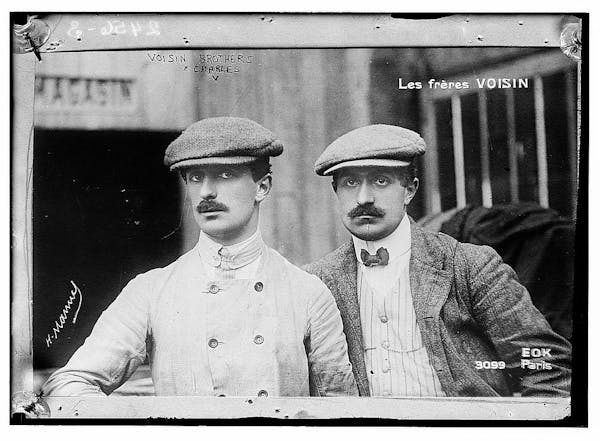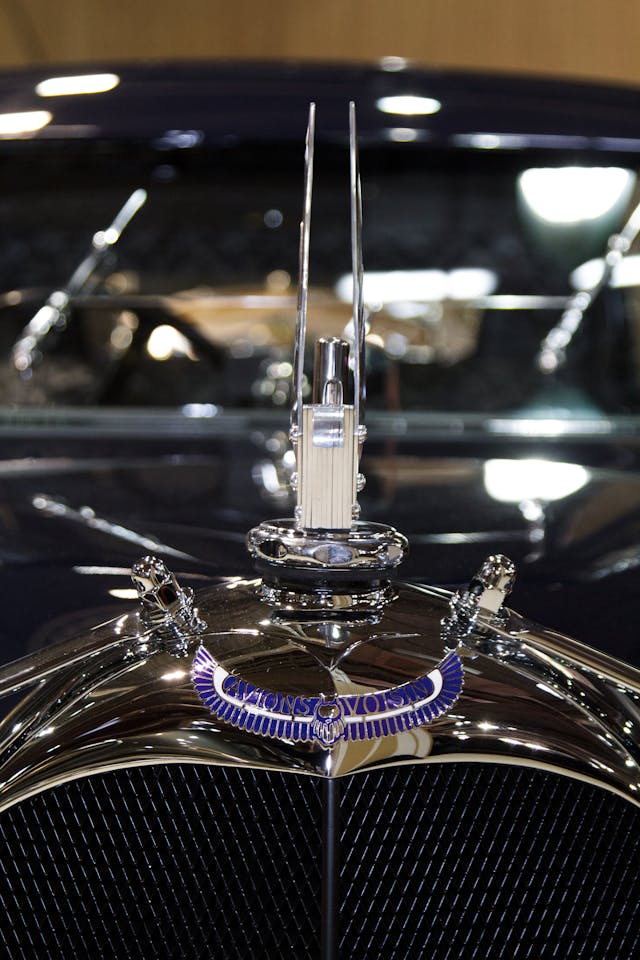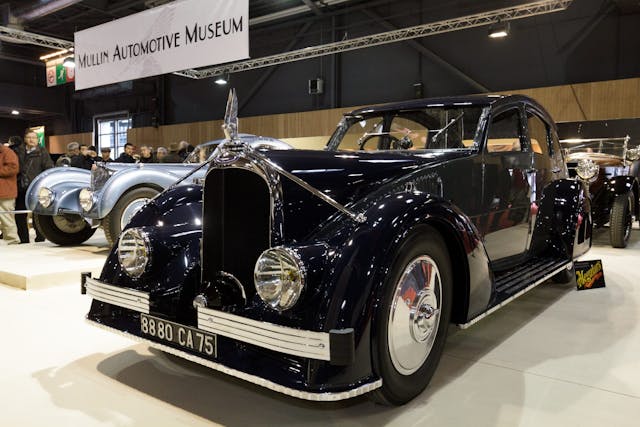Get an up-close look at the Mullin Museum’s 1935 Voisin Type C25 Aerodyne
French aviation pioneer Gabriel Voisin’s career in aeronautics clearly had an influence on his creation of the 1935 Voisin Type C25 Aerodyne. If the car’s name doesn’t already give it away, seeing is believing.
Voisin and his brother Charles began building airplanes in 1906, and Gabriel Voisin later concentrated on military aircraft following his brother’s death in a 1912 car accident. At the conclusion of WWI, Gabriel applied his vast knowledge of aviation to the production of automobiles, and his crowing achievement was the curvaceous, streamlined C25 Aerodyne.

According to the Mullin Automotive Museum, Voisin (who built cars from 1919–39) produced six Type C25 Aerodyne models in the ’30s. Only four are known to survive, including the museum’s—chassis no. 50010. The car is the subject of a just-released video hosted by docent Rick Eberst, who is joined by fellow docent Dave Buchko. It is the seventh in a series of “Under the Hood” virtual tours that focus on cars in the Mullin Collection.
The Mullin Museum, currently closed due to the coronavirus pandemic, is located in Oxnard, California, about an hour northwest of Los Angeles.
In addition to the new Voisin video, “Under the Hood” episodes have highlighted the 1911 Hispano-Suiza Type 45CR King Alfonso XIII and the 1929 Bugatti Type 43/44. Upcoming episodes will focus on the 1938 Tatra Type 87 (October 23), the 1994 Bugatti EB110 Super Sport (October 30), and the 1928 Lorraine Dietrich Type B3-6 (November 6).
The Voisin Type C25 Aerodyne was introduced at the 1934 Paris Auto Salon, and its revolutionary modern design drew crowds of admirers despite formidable competition from Renault’s new Hyper Aerodynamic and Citroën’s Traction Avant. Voisin intended the Aérodyne, which he dubbed the “car of the future,” to capitalize on the public’s growing fascination with streamlining and aerodynamics. It was a project that Voisin hoped would remake his marque’s image in the wake of financial difficulties.
According to the Mullin Museum website, “Even in an era of progressive design, the Aérodyne was avant-garde. With its two-tone paint, wraparound fenders, low, faired-in headlights, high beltline, skirted rear fenders, and automated, retractable roof, the Aérodyne cut a profile unlike anything else; it was an Art Deco masterpiece. In contrast with this dynamic profile, the Aérodyne retained the typical Voisin sleeve-valve [inline-six] engine and stylized radiator grille, which was conservatively straight, vertical, and topped by a haughty hood ornament.”

It was, however, one of the more expensive cars on the market, and few Parisians took the plunge.
Chassis no. 50010, purchased by the Mullin Collection in 2005, underwent an extensive, years-long restoration before winning Best of Show at the 2011 Pebble Beach Concours d’Elégance. It’s the only car restored entirely by the Mullin Museum that has won this honor.
“The first thing you notice when you sit behind the wheel and look at the dash is that this looks like an airplane,” Eberst says in the video. “It has [all] kinds of bells and whistles and dials for the ‘pilot’ to control.”
Among the C25’s fascinating attributes is the ability to adjust the suspension in response to driver input, a common feature these days but cutting-edge technology for the time.
The museum’s attention to detail while restoring the aluminum-bodied car is evident on every inch of the car, but perhaps the most attention-grabbing feature is the seat upholstery. “When it won Best in Show (at Pebble Beach), one of the things that caught everyone’s attention was this wild upholstery,” Buchko says. “You can imagine that trying to replicate this would be really difficult to do, especially if you were like Peter Mullin, who wanted to pay particular attention to detail.”

Mullin was able to locate the original looms in France that were used to create the upholstery in 1935. Better yet, he found two craftsman who had operated the loom in 1934–35, and they created the upholstery the Voisin now wears. “It’s not the original upholstery,” Buchko says, “but it comes about as darn close as you’re going to get.”
One final bit of Voisin trivia: Not only did Gabriel Voisin never forget his aeronautic roots, he never let anyone else forget them either. All of his cars received a badge with the words “Avions Voisin,” the original name of his company, which translates to Voisin Airplanes. The C25 Aerodyne definitely looks the part.


